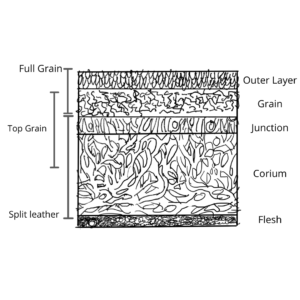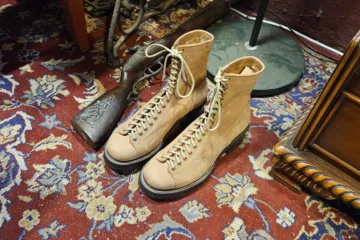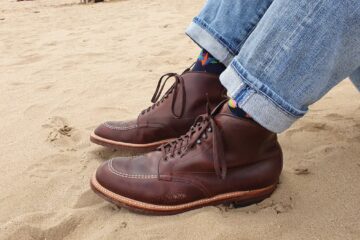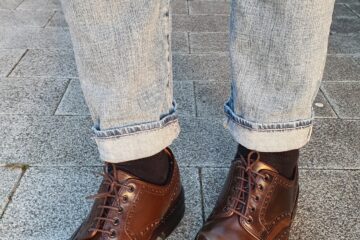When it comes to the top quality leather, full-grain leather is indeed the real deal! The sheer sophistry and elegance that comes with it are unparalleled. This kind of richness, depth, and complexity is only achieved through full-grain leather.
Others might be confused as to what is full-grain leather. Novices might hear the term full-grain leather and imagine leather that is rough and grainy. It isn’t the case, however. Full-grain leather refers to the purest, unadulterated form of leather.in its natural state.
What is full grain leather?
When we talk about the term full-grain, it refers to the most durable and most robust part of the animal hide. It is located just below the hair and has not been buffed, snuffed, or sanded. It is in stark contrast to corrected grains, which means it shows more natural leather characteristics.
Since the grain surface is left intact before a surface coating is applied, the fibre can impart more strength and durability. As it continues to age, it will develop a patina over time.
Most often, full-grain leather comes with an aniline finish that stains or dyes the leather while still permitting the natural leather grain to be visible. This gentle finish makes the leather continue breathing in contrast to other types of leather, which are sanded down and are given a thicker finish coat.
Full-grain leather is regarded as the top of the line quality leather. It is no wonder that many leather connoisseurs opt for it for a lot of their bags, shoes, and other accessories.

Where does full grain leather come from?
Full-grain leather comes from the skin layer just under the hair and is made from the outermost part of the animal hide. It means that it is more durable as the composition of the fibres is more tightly intertwined.
Full-grain leather can come from various sources such as goats, pigs, sheep, and even more exotic animals like alligators, ostriches, and kangaroos. Despite this, cowhide is the most commonly used animal hide to make full-grain leather.
What does full grain leather look like?
Full-grain leather is distinct since it shows all the natural markings and blemishes, which adds character and style to the leather for most customers.
By having the strongest, the outermost layer of animal hide used and keeping the grain in its true nature instead of being sanded down to look more refined and uniform, full-grain leather is more durable than its other counterparts. A patina or a change in colour develops as soon as the leather ages. Changes in colour appear to occur much faster on untreated pieces. They are considered to be a highly wanted characteristic of this kind of leather.
Please take a closer look at it. You can even see the pores and the minute hair follicles (given that you are using a magnifying lens), which tells you about its high quality. Fat wrinkles or growth lines, natural variations in the grain texture, shading, and small scars are other characteristics you might also want to look at.
Each animal hide is unique as it comes from a different animal with different markings and blemishes. So, when looking at or working with full-grain leather, you’ll eventually come up with the realization that no two animal hides are identical.
Full grain leather uppers
Whenever you come across the term leather uppers, think of it as leather uppers that have been made from full-grain leather. Leather uppers are a part of a boot or shoe above the sole that is made from leather. Technically the body of your shoe except the sole constitutes the leather upper. If it is made from full-grain leather, then technically, it is called a full-grain leather upper.
Maintenance tip for full grain leather
Full-grain leather, due to its natural characteristics, is relatively low maintenance. We suggest that you only wipe your bags, shoes, and accessories with a clean cloth to avoid the build-up of dust and dirt. The most crucial thing about full grain leather maintenance is how you store it. Never keep it in a warm, dry place as it can dry out the leather and damage it. A storage room with about 40-50% moisture is key to maintaining the leather’s natural moisture.


